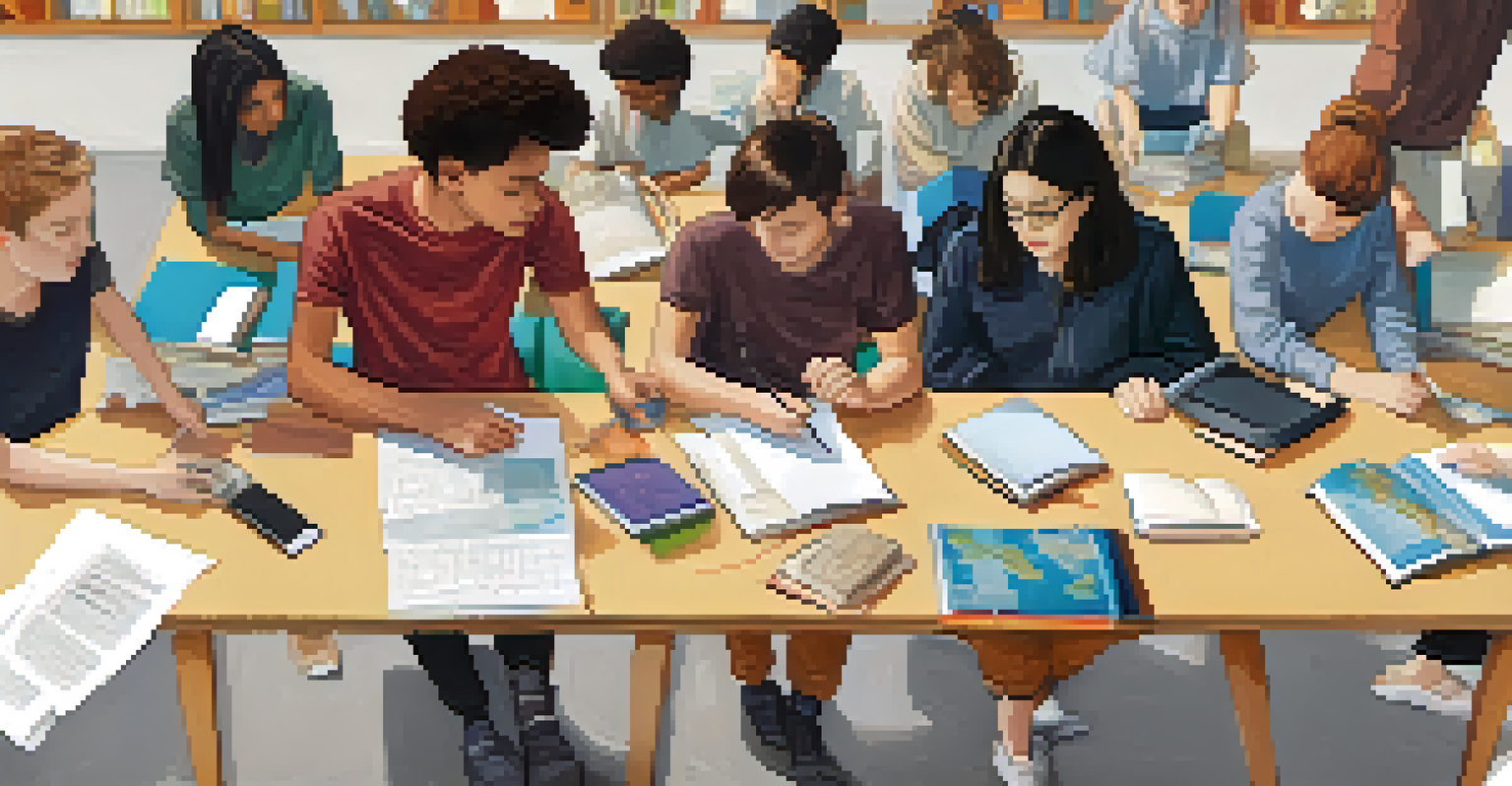Peer Learning as a Vehicle for Cultural Exchange in Education

Understanding Peer Learning and Its Importance
Peer learning involves students engaging with one another to share knowledge and skills. This method not only enhances understanding but also builds a sense of community among learners. By collaborating, students can develop critical thinking and problem-solving skills more effectively than through traditional methods.
Education is the most powerful weapon which you can use to change the world.
The importance of peer learning lies in its ability to create a supportive environment where students feel comfortable expressing their ideas and asking questions. This collaborative approach encourages diverse perspectives, which can lead to richer discussions and a deeper understanding of the material.
Additionally, peer learning can break down barriers and promote inclusivity. When students learn from each other, they are more likely to appreciate different viewpoints, fostering respect and understanding among diverse cultural backgrounds.
Cultural Exchange: What Does It Mean in Education?
Cultural exchange in education refers to the sharing of ideas, values, and traditions among students from different backgrounds. This exchange enriches the learning experience and broadens students' worldviews. It encourages learners to appreciate diversity and understand various cultural contexts.

In an increasingly globalized world, understanding different cultures is crucial. Educational institutions can serve as melting pots where students not only learn academic content but also engage in meaningful cultural dialogues. This intermingling helps students develop empathy and global citizenship.
Through cultural exchange, students can explore their own identities while gaining insights into the experiences of others. This dual exploration fosters mutual respect and cooperation, vital skills in our interconnected world.
How Peer Learning Facilitates Cultural Exchange
Peer learning serves as an effective vehicle for cultural exchange by providing a platform for students to share their diverse backgrounds and experiences. When students collaborate, they naturally discuss their cultures, traditions, and perspectives, making learning more personal and relevant.
The beautiful thing about learning is that no one can take it away from you.
This interaction not only enhances academic learning but also promotes social skills. Students learn to navigate different viewpoints, fostering negotiation and compromise—skills that are invaluable in both academic and real-world settings.
As students engage with one another, they build friendships that transcend cultural boundaries. These relationships can lead to increased cultural awareness and appreciation, benefiting the broader educational environment.
Real-World Examples of Peer Learning in Action
Many educational institutions worldwide have embraced peer learning as a strategy for cultural exchange. For instance, programs that pair local students with international exchange students enable rich discussions about cultural differences and similarities.
In language learning, peer teaching can be particularly impactful. Students who are native speakers of a language can help their peers learn through conversation, sharing not just vocabulary but also cultural nuances that textbooks may overlook.
These real-world examples illustrate that when students from diverse backgrounds collaborate, they create a vibrant learning atmosphere that benefits everyone involved. It’s a win-win situation where academic and cultural learning go hand in hand.
Challenges of Implementing Peer Learning
While peer learning offers numerous benefits, it also comes with challenges. One significant hurdle is the potential for communication barriers, especially when students speak different languages or come from distinct cultural contexts.
Additionally, some students may feel hesitant to share their perspectives or may dominate discussions, which can stifle the voices of others. It’s essential for educators to create a balanced environment that encourages participation from all students.
Overcoming these challenges requires careful planning and facilitation by educators. Training students on effective communication and collaboration techniques can help ensure that peer learning remains inclusive and beneficial for everyone.
Strategies to Enhance Peer Learning and Cultural Exchange
To maximize the benefits of peer learning, educators can implement structured activities that promote collaboration. Group projects, discussion circles, and cultural exchange presentations can provide students with opportunities to work together and learn from one another.
Incorporating technology can also enhance peer learning experiences. Online platforms allow students to connect and collaborate beyond the classroom, facilitating ongoing cultural exchange and dialogue.
Finally, it's crucial to foster a classroom culture that values diversity and inclusion. Celebrating different cultures through themed events or discussions can encourage students to share their experiences and perspectives, further enriching the learning environment.
The Future of Peer Learning and Cultural Exchange
As education continues to evolve, the role of peer learning in cultural exchange is likely to grow even more significant. With the rise of digital learning environments, students now have the opportunity to connect with peers globally, expanding their cultural horizons.
Future educational models may increasingly focus on collaborative learning experiences that emphasize cultural awareness. This shift could lead to more inclusive curricula that reflect the diverse backgrounds of students.

Ultimately, fostering peer learning and cultural exchange prepares students for a world that is rapidly changing and interconnected. By equipping students with the tools to understand and appreciate diversity, we can help cultivate a more harmonious global society.